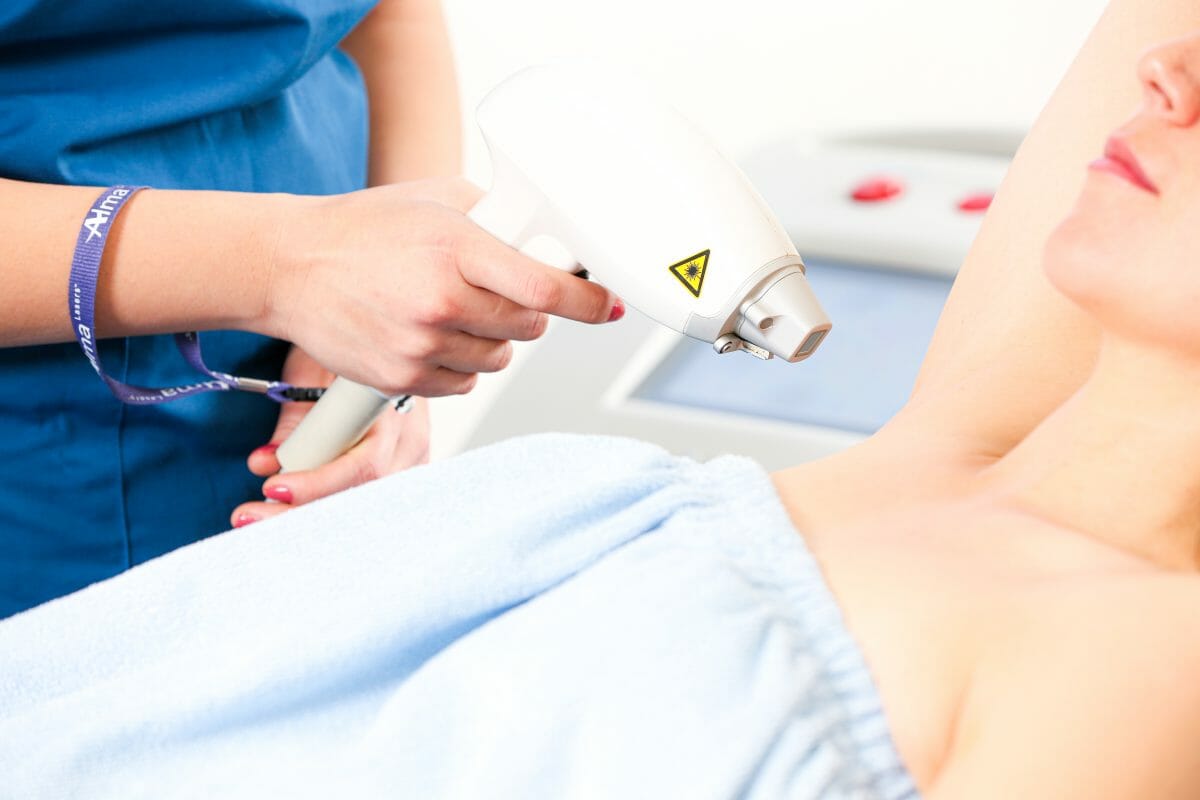Lasers permanently remove unwanted hair, saving you time and money in the long run. The reason you find ads stating nd yag laser machine for sale has become popular among clinics. There is a need minimum of 6 laser hair removal sessions required. Does this imply that six sessions will be sufficient for effective laser hair removal? No, not always. Indeed, factors can obstruct treatment and necessitate additional sessions. Furthermore, because everyone is unique, laser treatments will be tailored to each patient.
- Why must I wait six weeks between laser hair removal sessions?
Patients must wait six weeks between sessions for effective laser hair removal. Why? To begin, allow the skin to heal and regenerate. Laser hair removal is safe. The light energy leaves the skin more sensitive and vulnerable to outside aggressors after a treatment. As a result, it requires time to rebuild its strength.
The hair growth cycle is another factor. Laser hair removal is only effective on body hair in its anagen phase. Indeed, it is the only time when hair and follicle connect, allowing energy to pass from one to the other. Unfortunately, each hair has its growth cycle, and only 20% of all body hair is in the anagen stage at any given time.
As a result, one laser hair removal session can only target 18 to 20% of the hair in a specific area. Waiting six weeks allows hair that has not yet grown or is in another growth phase to transition into the proper growth phase. The laser can be targeted in teh area and treated effectively.
- Is laser hair removal appropriate for everyone?
Laser hair removal works efficiently on dark hair and light skin because the contrast is the greatest. As a result, for a long time, we thought that people with dark skin or blonde hair couldn’t get laser hair removal, or, at the very least, it would be less effective. However, advances in laser technology have made it possible to effectively remove hair from a variety of skin and hair types, including full leg laser hair removal.
Why? Because the contrast between body hair and skin allows the laser to target the most concentrated source of pigments. Unfortunately, dark skins contrast poorly with dark hair. The same is true for blonde hair on light skin.
As a result, people with dark skin and fair hair were more likely to be burned by the laser. However, advances in laser technology have changed that. Indeed, the development of ND: YAG lasers enabled effective laser hair removal for people with dark skin or fair hair. Nd: YAG lasers are not as well absorbed by melanin as other lasers. As a result, it can treat all skin types. It does, in fact, deposit energy deep into the dermis without relying on melanin. Nd YAG laser machine has been considered one of the best laser hair removal machine for best treatment.
- What factors can have an impact on laser hair removal treatment?
A few factors can obstruct effective laser hair removal. For example, people with dark skin and blonde hair may require additional sessions despite the introduction of ND: YAG lasers. They can have laser hair removal, but the lack of contrast between hair and skin can make it difficult for the laser to target the hair. Because ginger and grey hair is low in pigments, the treatment may take longer. Hormones control the hair growth cycle. As a result, if you are using hormonal contraception, receiving hormone therapy, or going through a transition, your treatment may take a little longer. Hormones can either stimulate hair growth more or disrupt the cycle entirely. However, it will only add a session or two to the treatment.

